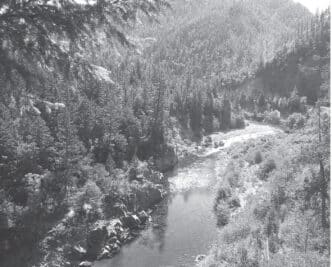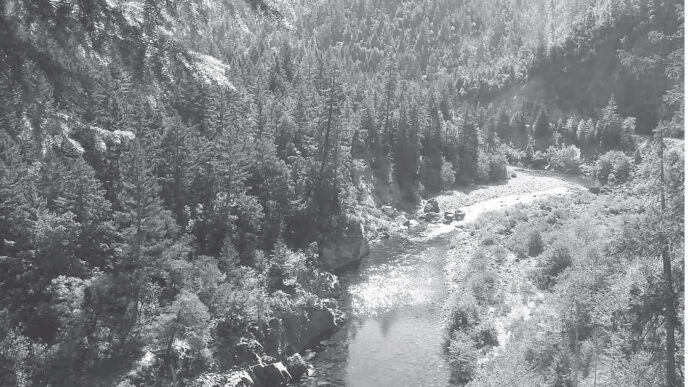Water Bond and Delta Updates
Populations of many endangered fish species in the Sacramento–San Joaquin Delta are on the decline. A newly released report on the California Department of Fish and Wildlife (CDFW ) 2013 fall trawl-net sampling of Delta locations shows that Delta smelt in the sample declined from to 18 from 42 in 2012 and from 408 when the CDFW first started sampling populations in 1967. The smelt were listed as endangered in 2010 under the California Endangered Species Act. Striped bass declined to 70 from 125 in 2012 and from 19,677 in 1967. American shad declined to 309, down from 415 in 2012 and from 3,422 in 1967.
The sample showed some good news for the Delta minnows that feed the bigger fish, however. Populations of longfin smelt and threadfin shad increased, while the numbers of the Sacramento splittail were unchanged.
The results are from a CDFW survey from September through December 2013 conducted by dragging a 12-foot-by-12foot net in 43 Delta locations, including the Sacramento and San Joaquin Rivers, the Deep Water Ship Channel, and San Pablo Bay. The CDFW uses results from fall and spring samples at the same locations to create an index of the health of the Delta. Creation of the index is mandated in order to protect and restore endangered species.
While the fall sample of Delta smelt numbers were skimpy, a 2013 report by a coalition of state and federal agencies in the Interagency Ecological Program for the San Francisco Bay Estuary showed an “upward swing [in the Delta smelt population] since a 2007 drop-off.” In addition, the smelt are reaching a minimum size of 20 millimeters (.78 of an inch) earlier than any time in the history of the survey, which, according to the interagency report, is a sign of a healthier population.
These population numbers for smelt are good or bad news, depending on who is doing the interpretation of the complex, seasonal, and area-specific data. Agencies in charge of the Delta are pleased with the seven-year upturn in the Delta smelt population, while environmentalists lament the long-term downward trend.
In a rally at the State Capitol, environmental activists said that the decline in the Delta fish species numbers coincides with the increased pumping of Delta water to agricultural and urban areas in Southern California. “Excessive water diversions from the Delta by state and federal projects and the failure of state agencies to enforce water quality standards have created an extended fish drought that can only be characterized as a biological holocaust,” said Stockton’s Bill Jennings, executive director of the California Sportfishing Protection Alliance, a coalition of fly-fishing clubs and conservation organizations. Added Jennings: “And the same agencies that orchestrated and chaperoned this biological meltdown are not only proposing a scheme to divert massive quantities of freshwater flows via tunnels under the Delta, under the guise of the Bay Delta Conservation Plan, but they ask us to trust them to build the tunnels now and figure out how to operate them later.”
The highly charged and complex issues concerning the Delta affect nearly all California residents. Comments in letters and the press hit a fever pitch in late July, following the deadline to comment on the environmental impact of the proposed Bay Delta Conservation Plan (BDCP), a plan that seeks to balance municipal and agricultural water needs and environmental concerns in the state. The 700-page plan, which was developed by state water planners after years of meetings and hearings, is supported by Governor Jerry Brown and includes construction of two tunnels that would run for 35 miles to transport water diverted from the Sacramento River near the city of Sacramento down to the southern Delta, where pumps would send it to Southern California in a system of existing canals. The tunnels are actually 40-foot-wide pipes.
By 2045, implementation of the plan is expected to cost $52.2 billion for plant bonds and $19.7 billion for pipeline bonds, according to BDCP documents. The cost of operating the new water facilities is estimated at $107 million per year for the 50-year life of the plan. Although the financing program calls for water users south of the Delta to pay for the tunnels and for some of the environmental mitigation costs, the state is expected to make a contribution. The state must also pay for building new reservoirs and dam work to raise the level of Lake Shasta in order to store more water to sustain wildlife downstream and for dry years.
In the final hours of this summer’s legislative session, lawmakers approved and the governor signed a bill (AB-1422) asking voters to approve a $7.5 billion water bond on the November 4 statewide general election ballot. The amount resulted from negotiations with the governor, who preferred a $6 billion version. If approved as Proposition 1 by voters, the new bond would provide $2.7 billion for water storage, $810 million for regional projects, $900 million for groundwater cleanup, $700 million for water recycling projects, and $137.5 million for Delta restoration.
Passage of any water bond usually can be predicted by polls that indicate support of at least 50 percent of residents, no organized opposition, and a ballot relatively free of other funding questions. So far, seven measures have qualified for the fall ballot, according to the California Secretary of State’s Office. One of these is Proposition 44, asking voters to allocate a percentage of state general funds to a Budget Stabilization Account, which is designed to prevent wild budget swings in the annual state funding process. Bonds can be passed by the legislature or be put on the ballet. Dean Cortopassi, a wealthy San Joaquin rancher, has filed an intent to submit a ballot initiative that would require voter approval of most state bonds, thus increasing the number that would be presented to voters.
Currently, the state has $76 billion in bond debt, not including $50 billion in approved bonds not yet sold and a backlog of money owed to public schools. Bond funds can be used only for capital costs of buildings, land, and facilities and not for ongoing maintenance and operation expenses. All the proposed water bonds being discussed are so-called “tunnel neutral,” which means that they contain no language funding the tunnels.
As the debate and the submission of ballot measures wears on, one question remains: Will the issues be settled in time to protect and restore endangered fish and enhance recreational opportunities?
Here is other news from around the state.
Fishing Regulation Changes
California’s Fish and Game Commission has started the process that could lead to several changes in the sport-fishing regulations. They include closing Silver King Creek and tributaries in Alpine County to fishing all year from below the confluence with Tamarack Lake Creek (below Llewellyn Falls) downstream to the confluence with Snodgrass Creek to protect native cutthroat trout, which are listed as threatened under the federal Endangered Species Act. Another proposal is to open to year-round fishing a section of the Pit River in Modoc County from the Highway 395 bridge crossing the South Fork of the Pit River downstream to the Highway 299 (Canby) bridge crossing of the Pit River. The goal is to increase angling opportunities for warmwater fish species. Currently, that section has Sierra regulations to protect trout, but sampling has found no trout in the river.
Other proposals include allowing angling from the last Saturday in April through November 15 on the upper Trinity River as part of the Trinity River special fishing regulations and extending the low-flow restrictions on North Coast and Central Coast streams until April 30 to protect wild steelhead and chinook salmon.
The commission’s next hearing on these and other regulation changes is scheduled for October 8 in Yreka, with consideration of adoption occurring on December 3 in Van Nuys. For more information on the proposed changes and exact time and location of meetings, visit the commission’s Web site at http://www.fgc.ca.gov/regulations/2014/index.aspx.
Float Independence Lake for Free
The Nature Conservancy, which purchased and is managing Independence Lake, is offering free use of kayaks and pontoon float tubes for anglers on a first-come, first-served basis. (To keep invasive species from the lake, anglers and others are not allowed to use their own watercraft.) The pristine lake is located north of Truckee and, as of midsummer, was 97 percent full. For more information, contact the conservancy at (775) 322-4990 or type “Independence Lake” in the search box on the conservancy’s Web site at http://www.natureconservancy.org.
Sisters on the Fly Honor Californian
Sisters on the Fly, an Arizona-based fishing organization known for their teardrop-travel-trailer expeditions and regular appearances at the fly-fishing show in Pleasanton, has honored Sally Stoner of Halcyon, California, for her volunteer work with Casting for Recovery, a group that supports breast cancer survivors. “Sally’s passion for sharing her years of knowledge and love of fly fishing with participants is heartwarming,” said the group in announcing the honor. “A breast cancer survivor herself, she has the ability to create a spiritual connection to fly fishing, making it meaningful.” Stoner regularly attends women’s fly fishing events with her dog Riffle. For more information on the group, including fishing trips in California, go to http://www.sistersonthefly.com.
Assemblyman Dahle Is Top Caster
It was all the buzz at the State Capitol — for one day, at least. The excitement was an assembly member winning the annual California Trout / Trout Unlimited Casting Call 2014, which was held on a sweltering June day on the capitol grounds. Brian Dahle (R-Bieber) won the fifth annual contest, which involved accurately casting to a hula hoop on the grassy grounds. He beat out Senate Republican Leader Bob Huff (R-Diamond Springs) and Senator Tom Berryhill (R-Twain Harte). The annual event, which features free ice cream and “chinooky cookies” to lure the suits out of the capitol building, is designed to raise awareness of fish and water issues.
CalTrout Uses Social Network to Raise Funds for Hat Creek
California Trout used the social network site Indiegogo to collect nearly $11,000 on the way to its goal of raising $1.1 million for its Hat Creek Restoration Project. Indiegogo is a crowd-sourcing Web site that allows its visitor to make charitable donations for worthy causes. The funds will be used for restoration projects on the creek. For more information about the fundraising effort and project, go to restoration-project.















